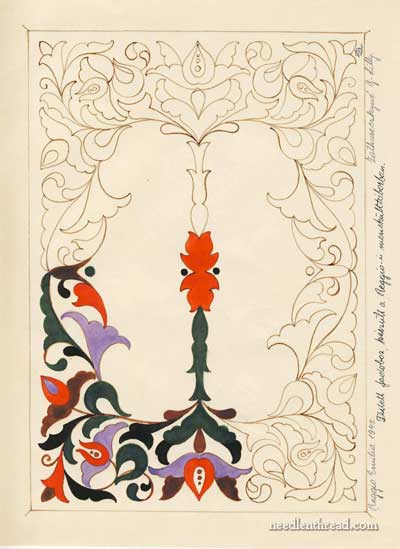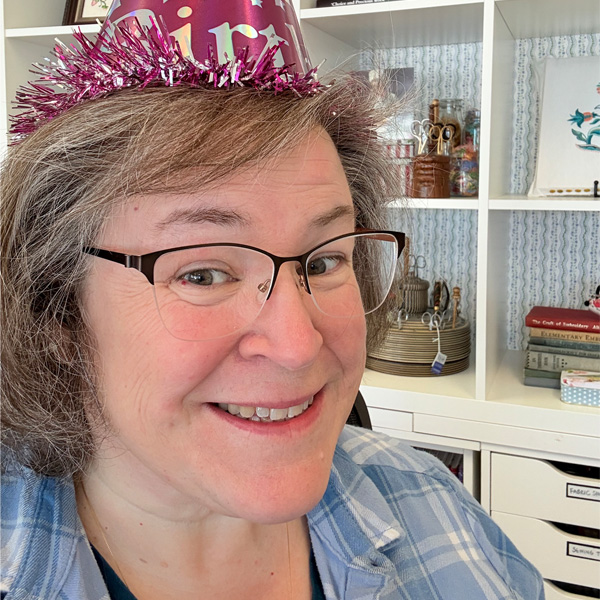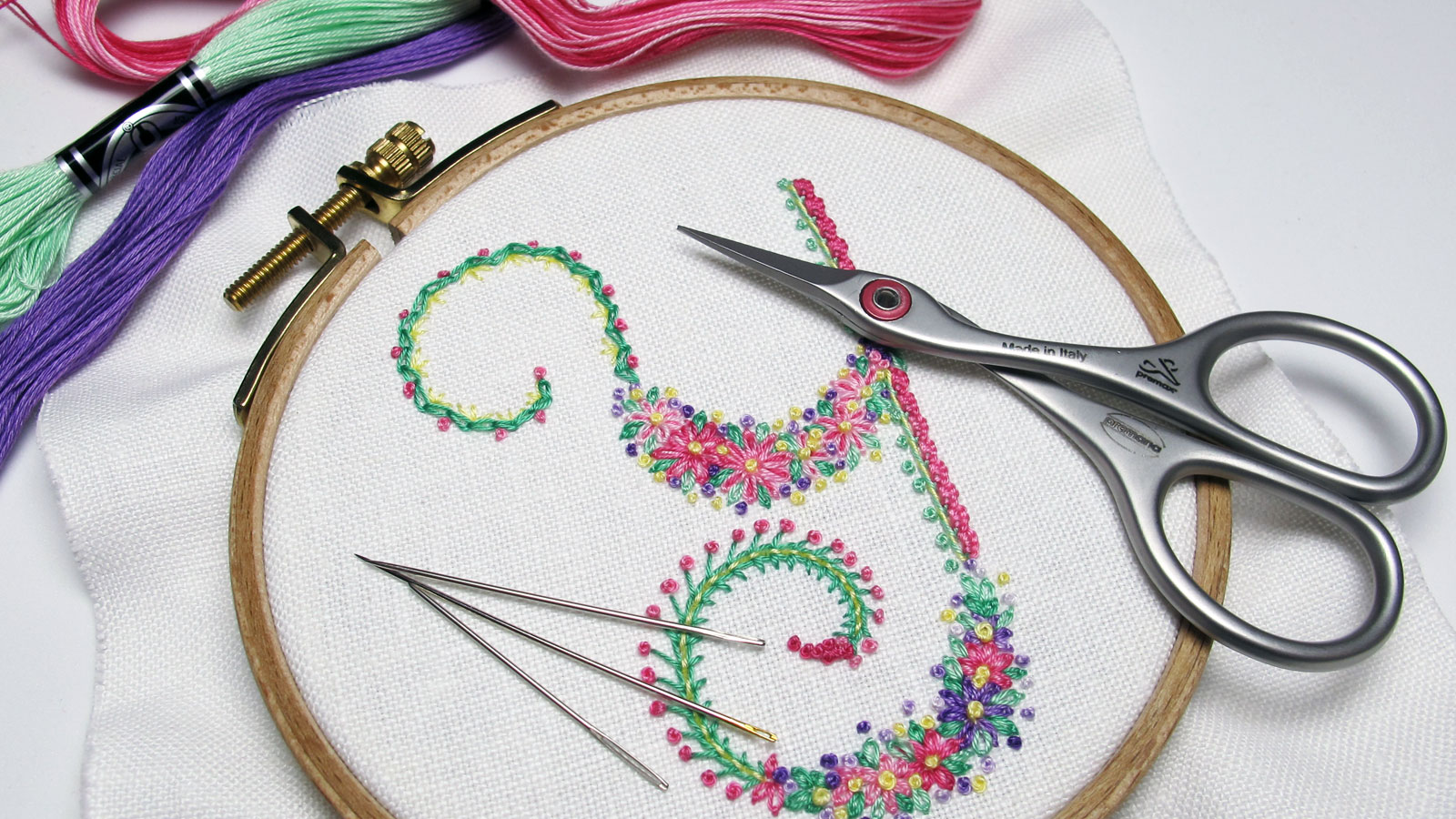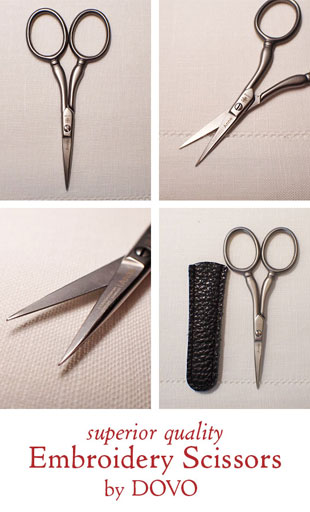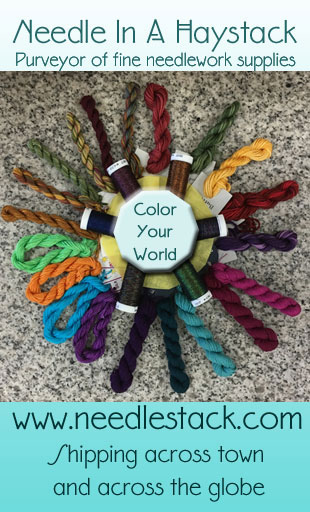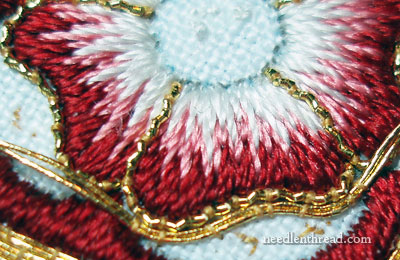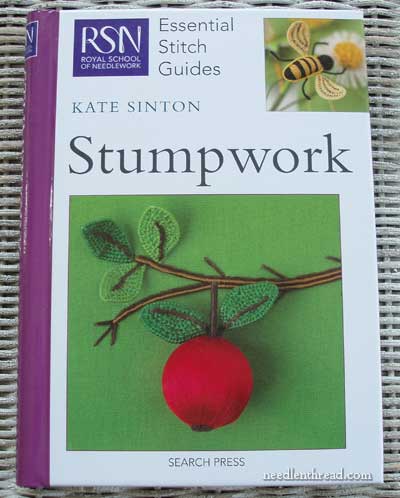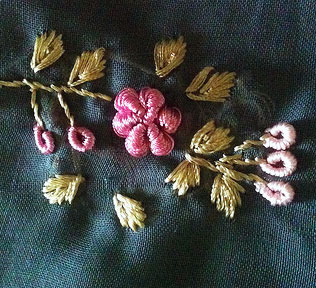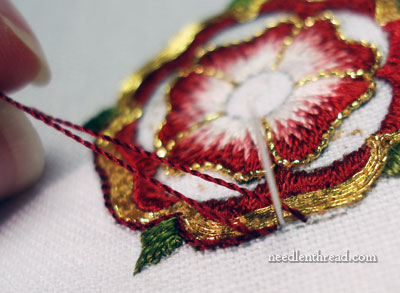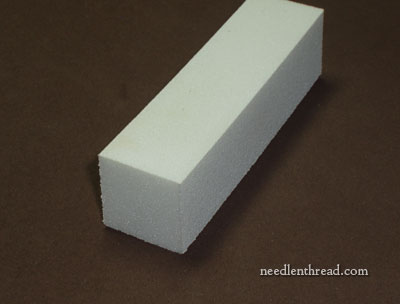In the most recent issue of Inspirations Magazine (Issue #71), you’ll find an article by yours truly about finding inspiration from the past for needlework designs today. In the article, I highlighted sources for out-of-copyright needlework designs that can be adapted to all kinds of different embroidery techniques.
Besides designs from these old publications, I also like to glean ideas and inspiration from old pieces of needlework. One area of needlework where stitches, techniques, and materials are used in interesting combinations is old church embroidery. Whenever I get the opportunity (and have permission), I photograph old pieces of ecclesiastical embroidery, and often when I’m looking for ideas for materials, for interesting combinations of threads for certain effects, or for some kind of inspiration for a design, I’ll flip through my ever-growing collection of photos of church embroidery pieces. I also have a tendency to collect old worn out pieces of ecclesiastical needlework. Damaged beyond repair, they make a great learning tool.
Using an example from my collection of photos, I’ll show you what sparks my interest.
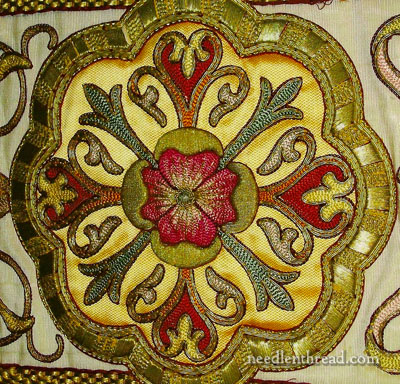 Continue reading “Ideas from the Past – Needlework Inspiration”
Continue reading “Ideas from the Past – Needlework Inspiration”
